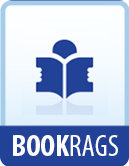The least that can be said of Charlotte Bronte is that she is a unique figure in literature. Nowhere else do we find another personality combining such extraordinary qualities of mind and heart,—qualities strangely contrasted, but still more strangely harmonized. At times they are baffling, but always fascinating. Nowhere else do we find so intimate an association of the personality of the author with the work, so thorough an identification with it of the author’s life, even to the smaller details. So true is this in the case of Charlotte Bronte that the four novels ‘Jane Eyre,’ ‘Shirley,’ ‘Villette,’ and ‘The Professor’ might with some justice be termed ’Charlotte Bronte; her life and her friends.’ Her works were in large part an expression of herself; at times the best expression of herself—of her actual self in experience and of her spiritual self in travail and in aspiration. It is manifestly impossible therefore to consider the works of Charlotte Bronte with justice apart from herself. A correct understanding of her books can be obtained only from a study of her remarkable personality and of the sad circumstances of her life.
Public interest in Charlotte Bronte was first roused in 1847. In October of that year there appeared in London a novel that created a sensation, the like of which had not been known since the publication of ‘Waverley.’ Its stern and paradoxical disregard for the conventional, its masculine energy, and its intense realism, startled the public, and proclaimed to all in accents unmistakable that a new, strange, and splendid power had come into literature, “but yet a woman.”
And with the success of ‘Jane Eyre’ came a lively curiosity to know something of the personality of the author. This was not gratified for some time. There were many conjectures, all of them far amiss. The majority of readers asserted confidently that the work must be that of a man; the touch was unmistakably masculine. In some quarters it met with hearty abuse. The Quarterly Review, in an article still notorious for its brutality, condemned the book as coarse, and stated that if ’Jane Eyre’ were really written by a woman, she must be an improper woman, who had forfeited the society of her sex. This was said in December, 1848, of one of the noblest and purest of womankind. It is not a matter of surprise that the identity of this audacious speculator was not revealed. The recent examination into the topic by Mr. Clement Shorter seems, however, to fix the authorship of the notice on Lady Eastlake, at that time Miss Driggs.
But hostile criticism of the book and its mysterious author could not injure its popularity. The story swept all before it—press and public. Whatever might be the source, the work stood there and spoke for itself in commanding terms. At length the mystery was cleared. A shrewd Yorkshireman guessed and published the truth, and the curious world knew that the author of ‘Jane Eyre’ was




